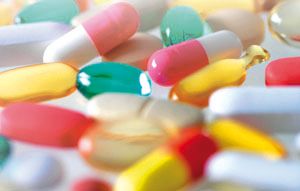Screening drugs in saliva
Scientists from Stockholm University in Sweden have developed a method for screening and determining drugs in human saliva using microextraction by packed sorbent (MEPS) and liquid chromatography tandem mass spectrometry (LC?MS?MS).1

Scientists from Stockholm University in Sweden have developed a method for screening and determining drugs in human saliva using microextraction by packed sorbent (MEPS) and liquid chromatography tandem mass spectrometry (LC–MS–MS).1
Traditionally, blood, plasma, and urine are used in drug studies in clinical and preclinical settings. Saliva, on the other hand, offers a non-invasive alternative to these traditional options. A range of drugs and their metabolites can be found in different concentrations in saliva. Lead author, Mohamed Abdel-Rehim, told The Column: “I was interested in this area for some years ago since I know many people (one of them is my son) are scared when they give blood samples. I became interested in saliva because saliva offers fast and non-invasive sampling. The collection and storage of saliva is also easier than blood.”
MEPS is a miniaturized sample preparation technique invented by Abdel-Rehim, and has been used to extract a wide range of drugs. In this study, published in Biomedical Chromatography, the team used lidocaine, a common local anesthetic, as the drug they extracted from saliva. A sample of 500 mg lidocaine salve was applied topically to the skin and saliva samples were collected at 0 h, 1 h, 1.5 h, 2 h, 3 h, and 4 h. The samples were then passed through the MEPS sorbent and analysed by LC–MS–MS.
The team was able to collect an exact volume of saliva at each attempt and high throughput was achieved. When the results were compared with those obtained from plasma, they were found to be similar. The only difference was that the concentration levels were lower in saliva than plasma. The method was regarded as cost-effective because the MEPS sorbent could be used more than 50 times before it was disposed of.
It was concluded that the study was suitable for automation and the small sample collections makes it ideal to obtain samples from children. Abdel-Rehim added: “The use of oral fluids as drug testing and as [a] diagnostic tool will be investigated in future work.”
Reference
1. A. Abdel-Rehim and M. Abdel-Rehim, Biomedical Chromatography DOI:10.1002/bmc.2925 (2013).
This story originally appeared in The Column. Click here to view that issue.

Analysis of PFAS in Milk by LC-MS/MS
May 15th 2025Dairy milk is one commodity that can be impacted by environmental contaminants, such as PFAS, so it is important to implement extensive, robust, and accurate testing. In this work, a sensitive and reliable method was developed for the analysis of PFAS in milk by LC-MS/MS at levels as low as 0.01 µg/kg.

.png&w=3840&q=75)

.png&w=3840&q=75)



.png&w=3840&q=75)



.png&w=3840&q=75)











